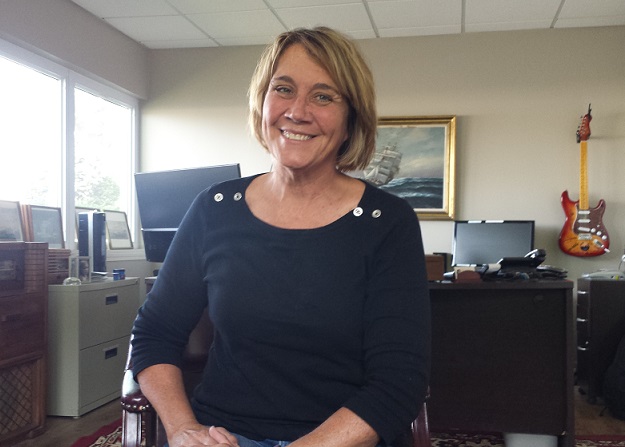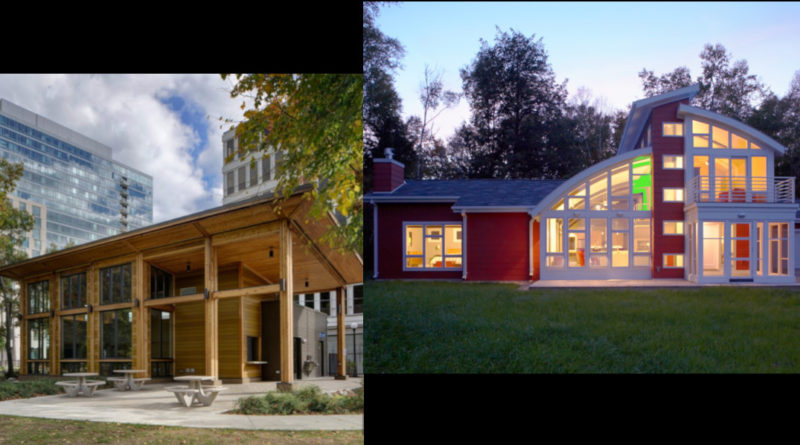Net Zero Energy Design…and Beyond!
Podcast: Play in new window | Download (Duration: 1:44:52 — 49.3MB)
Subscribe: Apple Podcasts | Spotify | Android | iHeartRadio | Podchaser | Email | TuneIn | RSS | More
Can architecture mitigate climate change?
(July 7, 2019) Here’s a confession. I know a little bit when it comes to growing things. But I’m pretty much an idiot when it comes to architecture and how buildings work. However, I think it’s important to know about LEED, passive house and Net Zero projects and more. Just don’t ask me to build anything for you. I constructed the worst table ever at a Boy’s Club in Royal Oak, Michigan around 1965.
So when we received separate pitches about a couple of regional architects who are working towards sustainability, I said, cool. Let’s bring them on together and see what happens. I’m doing this in alphabetical order by last name, so no fights, okay?
Tom Bassett-Dilley has been pursuing sustainability at Tom Bassett-Dilley Architects, Ltd. in Oak Park, Illinois since 2006. Here’s his path to that destination, in his own words.
I grew up in West Lafayette, IN, on 5 acres with a huge garden and a stream to explore, plus chickens, ducks, barns. Dad, a Purdue biochemist, grew up on a fruit farm in Michigan; Mom, and art teacher. I got interested in (obsessed with) architecture in 1979 when I was in high school. It started with a book on Frank Lloyd Wright. I was fascinated and inspired that buildings could be so entwined with their sites, and how that could mean great enjoyment of both the building and the site. Good living. So I went to the local bookstore (Von’s, what an institution) and looked for contemporary books on architecture, and wound up getting Ed Mazria’s (yes, the founder of Architecture 2030 years later) The Passive Solar Energy Book. Totally made sense that you would design a building to work with the environment for energy conservation just like you do for indoor-outdoor enjoyment a la Wright. These harmonized themes (aesthetics and performance) are what I’m still pursuing today.
One of his most recent projects is the Austin Gardens Environmental Education Center in Oak Park.
This Park project included a nature-based preschool, a meeting hall with a view to the park, and support for the Oak Park Festival Theater and winter skating. All of this was to be housed in a building of utmost energy efficiency, with water collection for toilet flushing, geothermal heat pump heating and cooling, rooftop solar photo-voltaic electricity production, and landscaping featuring a learning garden, rain gardens, native plantings, and outdoor gathering space.
In his blog, he writes about what’s next.
For those of us trying to radically push energy efficiency ahead, a strong incentive program can be a blessing. That’s what we now have with the Illinois Clean Energy Community Foundation. Their Net Zero Energy Building Program provides grant money to non-profits, local governments, and colleges/universities undertaking building to site net zero, typically through Passive House or Net Zero/ILFI Certification. Years ago they would provide funding for LEED projects, but as LEED became more common and the need for energy efficiency more urgent (and attainable!), they raised the bar from LEED to Zero Energy.
That takes us to our other guest on this segment, Evanston-based Nathan Kipnis, FAIA, principal at Kipnis Architecture + Planning. He received the 2019 Emerald Award for Individual Leadership from the Illinois Green Alliance, a non-profit organization that works to promote green buildings and sustainable communities. Here’s a little bit about his story.
From an early age – during the 1973 oil embargo, to be exact — Kipnis was drawn to improving the health of the planet through better, beautiful design. He crafted his first solar home at age 22 in Boulder, Colo. and since then, has designed more than 100 homes around the country. Along the way, he pioneered a design philosophy of “High Design/Low Carbon”™, which is at the core of his office’s work, projects ranging from historic renovations and additions to new construction.
Kipnis is the national co-chair of the national AIA 2030 Commitment working group, where he assists architects in their efforts to design full Net Zero buildings by 2030. Kipnis was instrumental in passing the Lake Michigan Wind Energy Act and helped craft the Evanston Climate Action Plan. He is co-founder and core member of NextHaus Alliance, a collaborative team of experts that builds beautiful and inspiring environments for visionary clientele.
Kipnis notes that his firm was an early signatory to the AIA’s 2030 Commitment. As such, it seeks to reduce each building’s CO2 emissions. Designs are reviewed throughout the process to best utilize green materials, advanced construction methods, and energy efficiency techniques. The result is a reduction in the environmental impact of the building through its entire life cycle.
Kipnis is also a co-founder of the NextHause Alliance. This group of award-winning design and build firms describe their work this way.
NextHaus Alliance was established to serve visionary homeowners who understand that homes should not only be beautiful and inspiring, but also thoughtful, sustainable and built for life. Today, that means designing resilient homes that can handle the powerful extremes of nature, from severe winds and storms to full-blown natural disasters.
By the way, on Thursday, July 11, NextHaus Alliance is having an event called Integration of Sustainable with Resilient Home Design with the Tesla Eco System. It’s at 1200 Old Skokie Valley Road, Highland Park, IL 60035 from 5:30 to 7:30 p.m.
If you’re like me, you’re wondering just how this kind of work can have a real effect on climate change. Well, that’s something that the AIA (American Institute of Architects) thinks about, too. Last month, at their 2019 conference, the AIA passed a resolution calling for “urgent and sustained climate action.”
The measure, which passed with 4,860 delegates voting in favor and 312 against, pushes for the acceleration of efforts to reduce carbon emissions and calls for a transformation in day-to-practice so that architects can achieve a more resilient built environment. It builds upon a series of climate change initiatives. Some of the most recent include a January pledge by the board of directors and the executive team to focus more of the AIA’s resources and influence on the problem and a statement issued in February by the organization’s president, William Bates, backing the proposed Green New Deal.
My only question is, what the hell is the matter with the 312 people who voted against the resolution and the 28 who abstained? Not yet convinced that we’re going down like the Titanic? Give me fifteen minutes in a room with you jamokes and we’ll see how you feel then.
Anyway, it’s a pleasure to have Tom Bassett-Dilley and Nathan Kipnis in studio with Peggy and me this morning to talk about net zero and even net positive design. I’ll try not to rough them up.
The Queen returns again…and again…and again…
The last time the Queen of All Gardening Media Melinda Myers was on our show, it was snowing on my wild ginger. And it wasn’t that long ago! For all I know, it’s still snowing in Milwaukee, where Myers is based. Here in Chicago, however, the weather has, in really just the past week, turned on a dime. It was hot, muggy and oppressive…until tonight, as I write this blog. And I’m sure we’ll get more.
 Here’s the problem. Some people have given up on growing vegetables this year. Seriously. I can assure you that’s not rational. But that’s also why we’re called “garden communicators.” (Yeesh.) Our job is to talk you off the ledge and tell you to get your beans in the ground. So to speak. That’s one of the reasons Melinda joins us today.
Here’s the problem. Some people have given up on growing vegetables this year. Seriously. I can assure you that’s not rational. But that’s also why we’re called “garden communicators.” (Yeesh.) Our job is to talk you off the ledge and tell you to get your beans in the ground. So to speak. That’s one of the reasons Melinda joins us today.
Another is that she will be speaking at Pasquesi Home & Gardens in Lake Bluff, Illinois on Saturday, July 13 at 11:00 a.m. The topic is “Incorporating Natives into Your Landscape.” If you listen to our show at all, you know that we strongly encourage our listeners–wherever they live in these United States–to incorporate native plants from their particular region in to their gardens.
As Melinda states,
Whether large or small there are ways to include native plants in any size landscape. Native plants are suited to our environment and benefit all-important pollinators. Whether you’re looking to add just a couple or fill your garden exclusively with natives, with proper selection you’ll have year-round beauty from flowers, visiting birds and butterflies, and winter interest–a wonderful combination of offerings for any landscape!
Amen, sister! By the way, if you don’t get the answer you’re looking for during her talk, stick around, because from Noon- 1 p.m. there will be a question and answer session with Melinda. No, not today. I’m talking about next week at Pasquesi.
But your questions to Melinda are welcome right here at The Mike Nowak Show with Peggy Malecki. Call us at 877-711-5611, or write us on Facebook, Twitter or Instagram.

